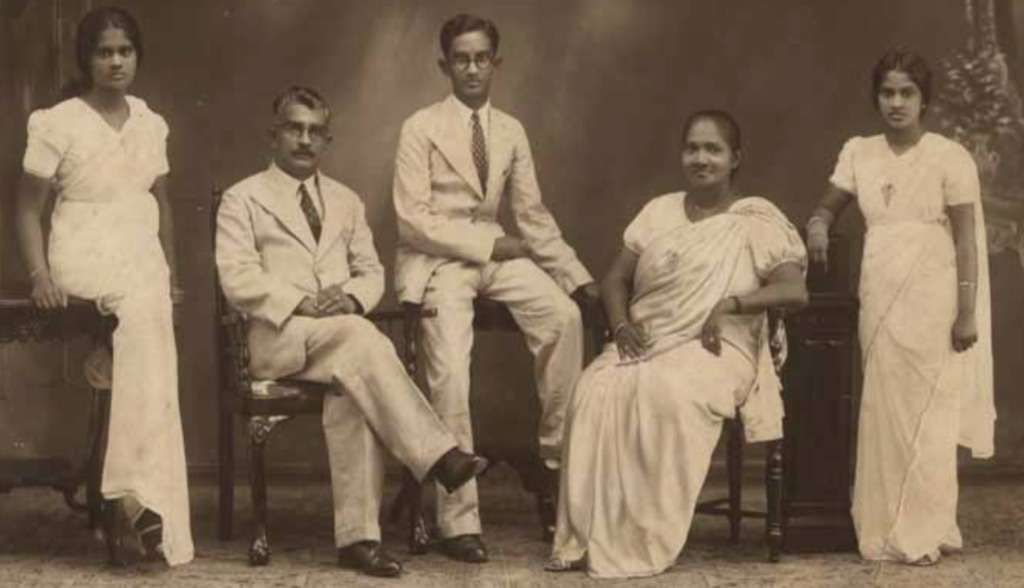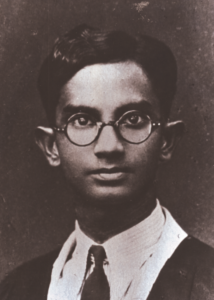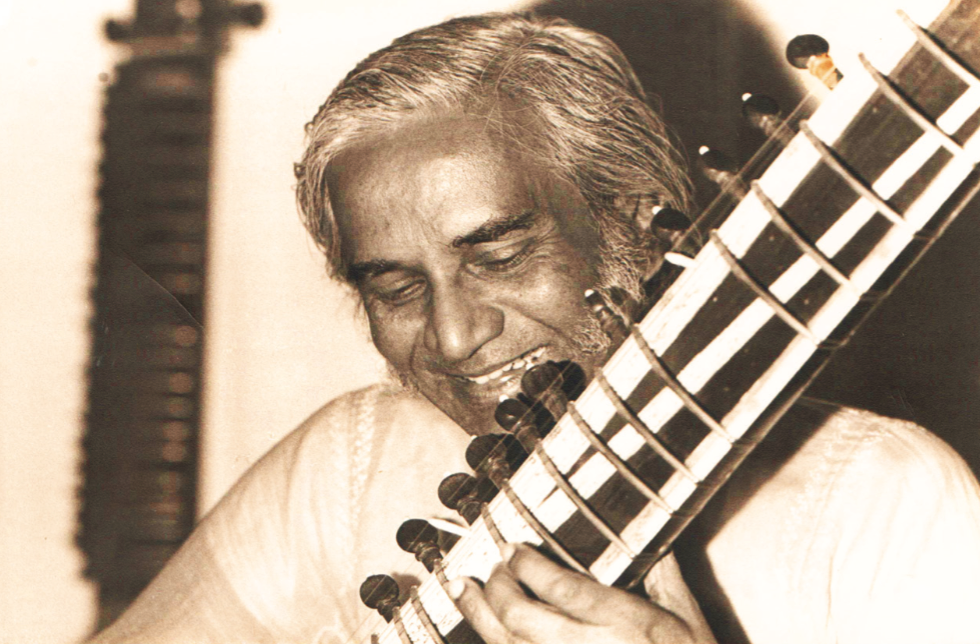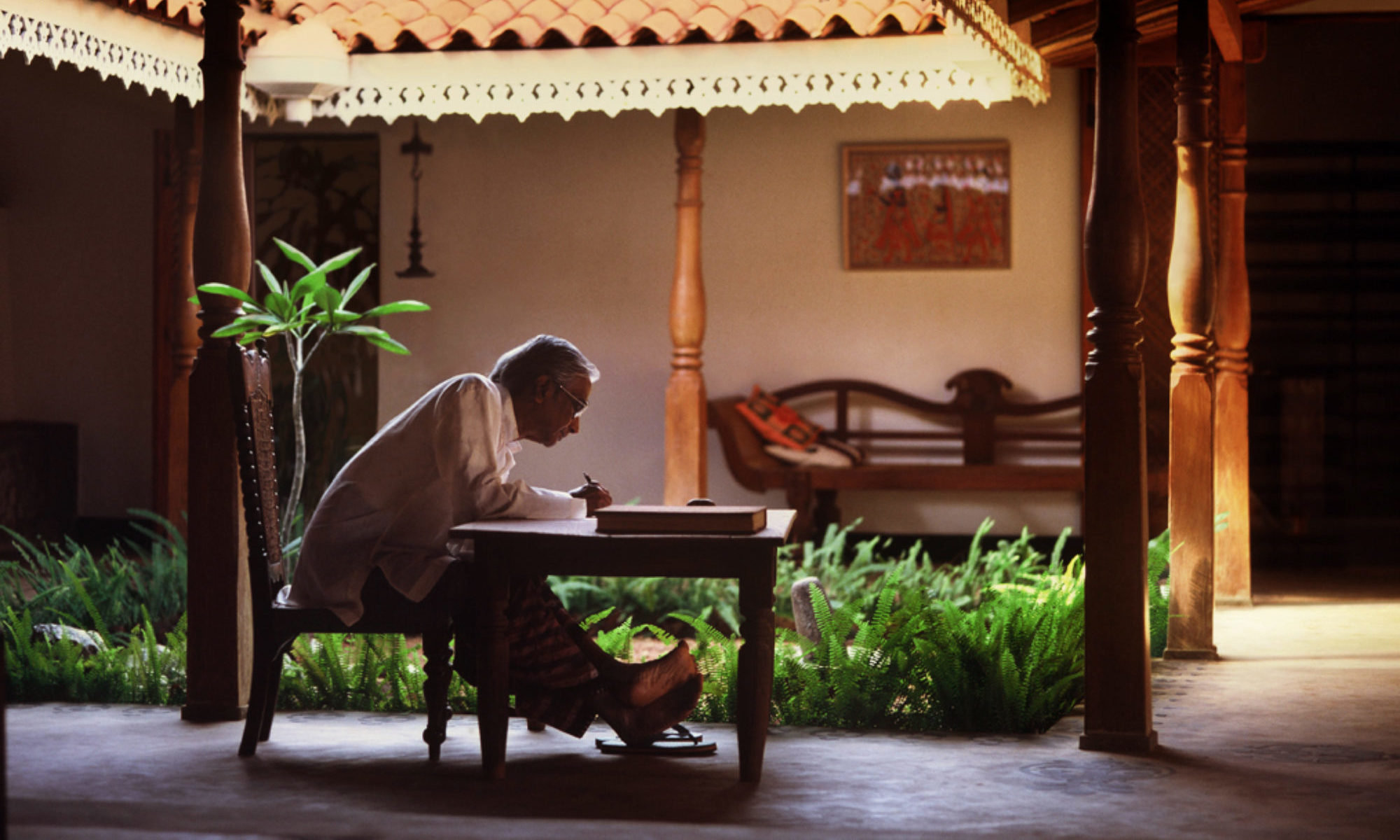On June 3rd 1914, Sarachchandra was born Vedithantirige Eustace Reginold de Silva, a first child and only son with two younger sisters, Prema and Padma. His father, Charles Francis de Silva entered the lower civil service as a postmaster and his mother Lydia Pinto Moragoda was a school teacher from the village of Ratgama in southern SriLanka.

Sarachchandra came of age in the complex cultural milieu of a rapidly westernizing Sinhalese middle class within a colonial society. His sense of the world was thus shaped by the contrasting attractions of British modernity on one hand and Sri Lankan tradition on the other. For instance, his family owned a foot-pedal organ in which his mother played Western music and a gramophone for his father’s collection of Indian and Sinhalese theatre songs. This exposure, as well as his passion for music, therefore drives him to teach himself to play one instrument after the other. Sarachchandra also visited local villages observing the old ways and collected folk songs.

Although progressing through a series of missionary schools due to his father’s frequent displacement, Sarachchandra also devoted himself to private study all the while mastering the Western idiom. Under the tutelage of Buddhist monks, he studied Sinhalese as well as Pali and Sanskrit. In 1933 he gained admission to the University College, Colombo and offered Pali, Sanskrit and Sinhala for the first degree.
Around this same time, Sarachchandra submitted articles about Sinhalese folklore and music to newspapers and magazines. He signed them ‘Sarachchandra’ which he began to use as his own name. He later adopted the name of Vedithantirige Ediriwira Ranjitha Sarachchandra. In 1939 Sarachchandra joined the Ceylon Daily News to apprentice as a young journalist. Inspired by a performance of Rabindranath Tagore and the Indian classical dancer Uday Shankar, he proceeded to Shanthi Nikethan in India with his young bride, Aileen Beleth, that same year. He thus immersed deeply into Indian philosophy and music.
 Upon his return, Sarachchandra became a part-time Sinhalese and music teacher, during which time his first daughter, Nanditha Manel, was born in 1940. In 1942 he joined the scholars compiling the Sinhalese Etymological Dictionary as a sub-editor, while also qualifying for a Master’s Degree in Indian Philosophy from the University of London externally. In 1944 he was appointed as a lecturer in Pali and the University of Ceylon.
Upon his return, Sarachchandra became a part-time Sinhalese and music teacher, during which time his first daughter, Nanditha Manel, was born in 1940. In 1942 he joined the scholars compiling the Sinhalese Etymological Dictionary as a sub-editor, while also qualifying for a Master’s Degree in Indian Philosophy from the University of London externally. In 1944 he was appointed as a lecturer in Pali and the University of Ceylon.
Sarachchandra devoted his time between 1947-1949 to qualify for a master’s degree in Western Philosophy from the University of London in England. He also earned an external doctorate in Buddhist Philosophy by virtue of the thesis titled “The Psychology of Perception in Pali Buddhism with Special Reference to the Theory of Bhavanga.” His second daughter Sunethra was born in 1949 upon his return to Sri Lanka.
In the year 1952, Sarachchandra joined the faculty of Oriental Studies at the University of Ceylon in Peradeniya. Here, he would expand his prodigious intellectual energies in several fields, and return to researching folk tradition, resulting in the publication of his ground-breaking book titled ‘The Sinhalese Folk Play and the Modern Stage’ in 1953.
Sarachchandra then became preoccupied with resuscitating indigenous theatre arts with the intent of their incorporation into Sri Lanka’s popular modern theatre, rather than merely for anthropological curiosities. Learning of these interests, the Rockefeller Foundation granted Sarachchandra a scholarship to travel the world and study theatre, which resulted in the dedication of the year 1955 to research in Asia and the United States. In Japan, Sarachchandra saw ancient traditions thriving in the modern world, such as the refined Kabuki, a style of drama that adapts traditional folk plays to fit modern audiences. Inspired by his travels, Sarachchandra returns to Sri Lanka to pursue research on the Nadagam tradition, after which he and writes and directs the epoch-making drama Maname, in 1956. He then goes on to publish his first novel, Malagiya Atto, in 1959. In the years that follow, Sarachchandra explores traditional dramatic forms seen with a contemporary eye through which he creates many plays and finally produces what is considered to be one of his finest works, Sinhabahu, in 1961.
Meanwhile, Sarachchandra is also appointed the professor of Pali at the University of Ceylon and later becomes professor of Modern Sinhalese Literature.
In 1965, he marries Lalitha Swarna Perera, his second wife, and later that year they travel to Granville, Ohio, USA where he serves as visiting professor in Buddhist Philosophy and Asian Culture at Denison University. Their daughter Kisagothami is born in 1966, soon after which they return to Sri Lanka. Sarachchandra and Lalitha’s second daughter Yashodhara was born in 1971 in Peradeniya, Sri Lanka.

From the years 1974 to 1977, Sarachchandra serves as ambassador of Sri Lanka to France, accredited to the vatican and Switzerland, as well as Permanent Delegate to UNESCO. During this time, he was named by Venerable Pope Paul VI, as the first Ambassador Extraordinary and Plenipotentiary of the Republic of Sri Lanka to the Holy See.
From the years 1978 to 1981, Sarachchandra served a research professor at the East-West Center in Hawaii, where his son was born Ransi Deepankara was born in 1978. Upon his return to Sri Lanka, Sarachchandra, now retired, spent most of his time in creative activities and was a social commentator of the political milieu. Appointed as the director of the Sarvodaya Research Institute in 1987, he continued to examine the perilous conditions of Sri Lanka’s social fabric.
